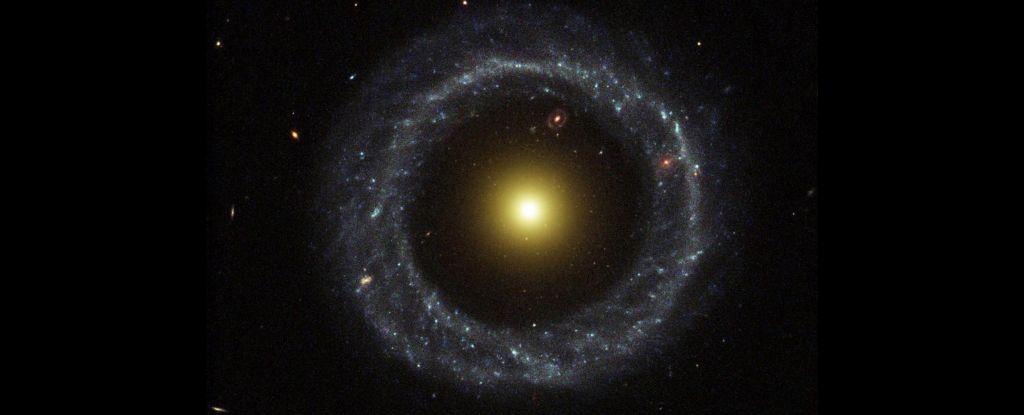
The universe continues to present scientists with a multitude of enigmas that challenge our understanding of cosmic phenomena. From the puzzling discrepancies in the expansion rate of the universe to the elusive nature of dark matter, these mysteries remain at the forefront of astronomical research. As researchers delve deeper into these unanswered questions, their efforts could lead to groundbreaking discoveries that redefine our knowledge of the cosmos.
The Hubble Tension: A Cosmic Conundrum
One of the most pressing issues in modern astronomy is the Hubble tension, which refers to the disagreement in measurements of the universe’s expansion rate. Two primary methods are used to calculate the Hubble constant: the “standard ruler” approach, utilizing relics from the early universe, and the “standard candle” method, based on objects with known brightness, such as Cepheid variable stars and Type Ia supernovae.
Measurements from standard rulers yield a value of approximately 67 kilometers per second per megaparsec, while standard candles suggest a higher rate of around 73 kilometers per second per megaparsec. This consistent discrepancy raises questions about our understanding of the universe and hints at potential new physics. While researchers are making progress, a definitive explanation remains elusive, and the resolution of this mystery could be a candidate for the Nobel Prize.
Fast Radio Bursts: Brief Yet Powerful
Another captivating phenomenon is the occurrence of fast radio bursts (FRBs), which are brief but intense bursts of radio waves. Discovered in 2007, the first FRB released energy equivalent to that of 500 million Suns. Most of these bursts are one-off events, but a few exhibit repeating patterns, hinting at complex underlying mechanisms.
Astronomers suspect that many FRBs are linked to magnetars, a type of neutron star with an extremely strong magnetic field. However, questions remain regarding the origins of these bursts and the reasons for their unpredictable behavior. Ongoing research aims to shed light on these enigmatic signals from deep space.
The Enigma of Dark Matter
The concept of dark matter has puzzled scientists since the early 20th century when astronomer Fritz Zwicky first theorized its existence. Observations indicate that the visible matter in the universe—stars, planets, and galaxies—cannot account for the gravitational forces needed to explain the structure and behavior of the cosmos.
Current estimates suggest that dark matter constitutes approximately five times more mass than visible matter. Despite numerous attempts to identify and study dark matter, it remains undetectable by conventional means, primarily interacting through gravity. Researchers continue to explore various theoretical candidates, but the true nature of dark matter remains one of the greatest mysteries in astrophysics.
GRB 250702B: A Record-Setting Gamma-Ray Burst
In July 2025, a remarkable event, designated GRB 250702B, was detected, marking a significant milestone in the study of gamma-ray bursts. These explosive events are among the most energetic phenomena in the universe, typically resulting from the collapse of massive stars or the merging of neutron stars.
Unlike previous gamma-ray bursts, which last only a few minutes, GRB 250702B exhibited activity for an entire day, with multiple eruptions of gamma radiation. This unprecedented duration offers a unique opportunity for scientists to investigate the conditions within the galaxy from which it originated, potentially leading to key insights into the mechanics of such powerful explosions.
Hoag’s Object: An Unusual Galaxy
Among the countless galaxies in the universe, Hoag’s Object stands out due to its peculiar structure. Located approximately 600 million light-years away, this galaxy features a perfect ring of young, blue stars surrounding a yellow sphere of older stars, creating a striking bullseye appearance.
The formation of such a symmetrical structure poses significant questions for astronomers. One theory suggests that a massive object may have punched through the galaxy, creating the gap between the two stellar formations. However, this scenario raises doubts about the likelihood of producing such a neat arrangement. As scientists continue to investigate, the origins of Hoag’s Object remain uncertain.
Planet Nine: A Hypothetical World
The search for a potential ninth planet, dubbed Planet Nine, has intrigued astronomers for years. Positioned far beyond Pluto, this hypothetical planet is thought to exert gravitational influence on the orbits of distant, icy objects in the Solar System.
Calculations suggest that Planet Nine could be about five times the mass of Earth, with an orbital period of around 5,000 years. Despite extensive surveys, no direct evidence of this planet has been found, leading to debates about its existence. Some scientists propose that the observed clustering of icy objects may reflect an observational bias rather than the presence of a hidden planet. Continued exploration is essential for resolving this cosmic debate.
What Lies Ahead
As scientific instruments become more advanced, the realm of the unknown in space continues to expand. The mysteries of the universe are vast, and ongoing research will inevitably unveil new questions and insights. We are in an unprecedented era of discovery, with the potential for transformative breakthroughs in our understanding of the cosmos.
The pursuit of answers to these cosmic mysteries not only fuels scientific curiosity but also deepens our appreciation for the complexity and beauty of the universe we inhabit. Scientists remain committed to unraveling these enigmas, and the future holds the promise of exciting revelations that could reshape our comprehension of space and time.






